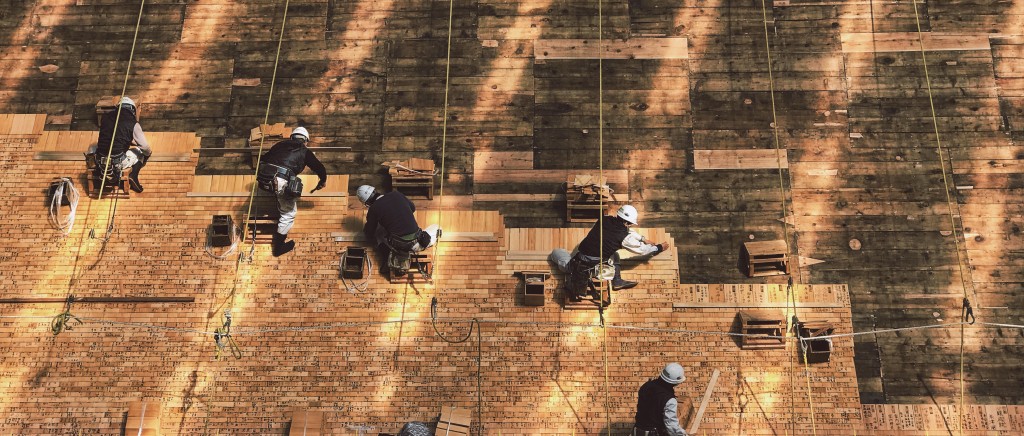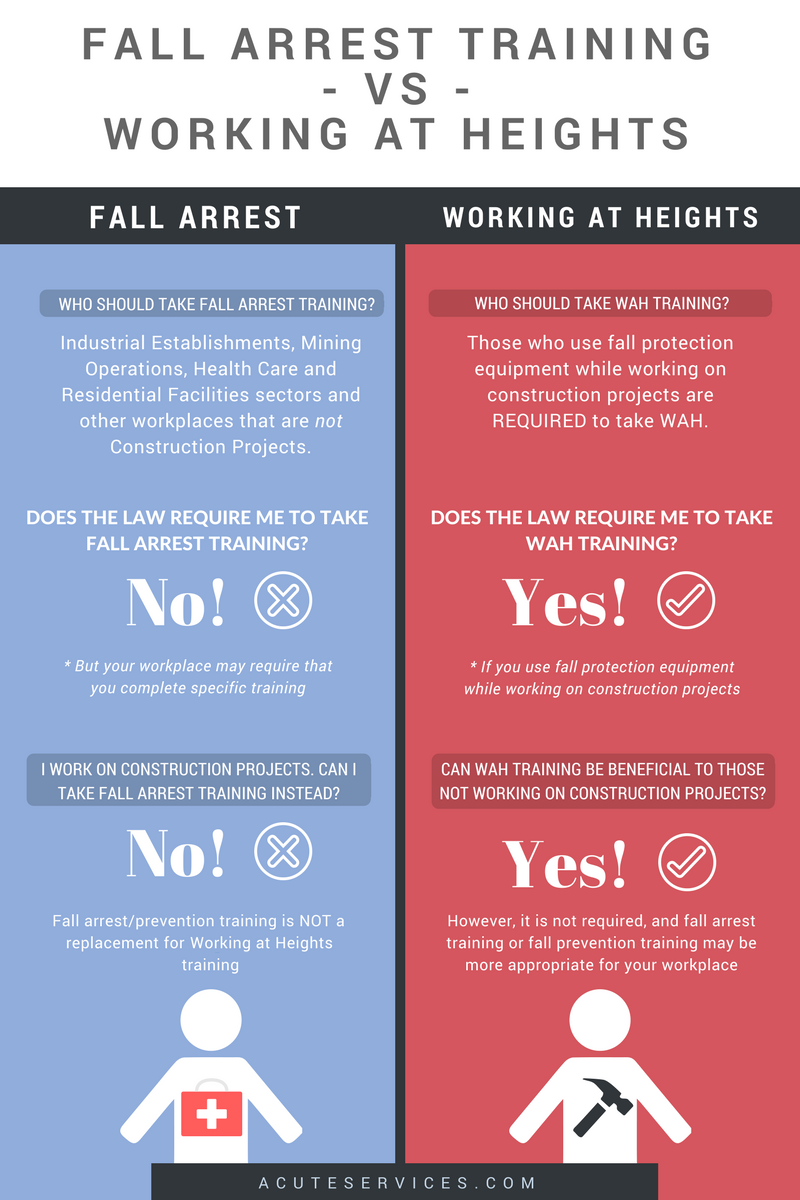Do you have unanswered questions regarding Working At Heights (WAH) Ontario? This page is here to help you learn all that you need to know to ensure you work safely at heights. With new Working At Heights legislation and requirements come new questions. If you have more questions or would like information about Working At Heights training, contact ACUTE today!
Looking For Working At Heights Training Now?
Chapters:
-
-
-
- The Fundamentals of Working At Heights
- Who Needs Working At Heights Certification?
- How to Get Certified For Working At Heights?
- How Often And How Do You Renew Your Working At Heights Certification?
- How To Find A High Quality Working At Heights Trainer?
- The Top 8 Things You Should Never Do When Working At Heights
- How to Minimize Safety Risks When Working At Heights
- Quiz Your Knowledge of Working at Heights Safety
- The Difference In Training Requirements For Working At Heights, Elevated Work Platforms, Scaffolding, Boom Lifts, and Scissor Lifts
- Working At Heights FAQ
-
-
Did you know that in 2015, Ontario companies spent $52M compensating workplace fall injuries? Working At Heights training can reduce this number, and, most importantly, protect workers.
In November 2015, CTV News Kitchener reported that a man was in critical condition after falling 15 metres at a construction site in Waterloo. In May 2016, CBC News reported that another man suffered serious injuries after falling four stories at a construction site in Toronto. Unfortunately, fall injuries are more common than many people think.
The ACUTE Working At Heights program is approved by the Chief Prevention Officer under the Ministry of Labour, Immigration, Training and Skills Development’s Working At Heights Training Program Standard and the Working At Heights Training Provider Standard.
Acute Training
What’s unique about ACUTE’s training centre in Kitchener-Waterloo?
• The ACUTE team has over 100 years of combined industry experience
• Engineered simulators for hands-on experience
• Construction site replica and lifelike mannequins
• Best equipped facility in Ontario
• Combines in-class training with hands-on practical competency testing
• High-quality training that empowers your team to work safely and effectively
Click here to view ACUTE’s course calendar.

Why complete Working At Heights training?
• To strengthen workplace safety culture by elevating the profile and importance of preventing falls from heights
• To provide workers who may be exposed to fall hazard with adequate knowledge and general safety practices to work safely at heights
• To provide workers who use personal fall protection equipment with sufficient knowledge about its purpose and use
• To reduce the number of fall-from-heights incidents, injuries, and fatalities
Working At Heights training course (Required by MLITSD)
• One day, 8-hour training course
• Provides both theory and hands-on practical learning
• Valid for three years
• Can be done at our facility or yours
Fall Protection
• Can be modified to address your specific equipment
• Detailed handouts, videos, and quizzes
• Can be done at our facility or yours
Information
• Working At Heights Training Ontario Online and Limitations
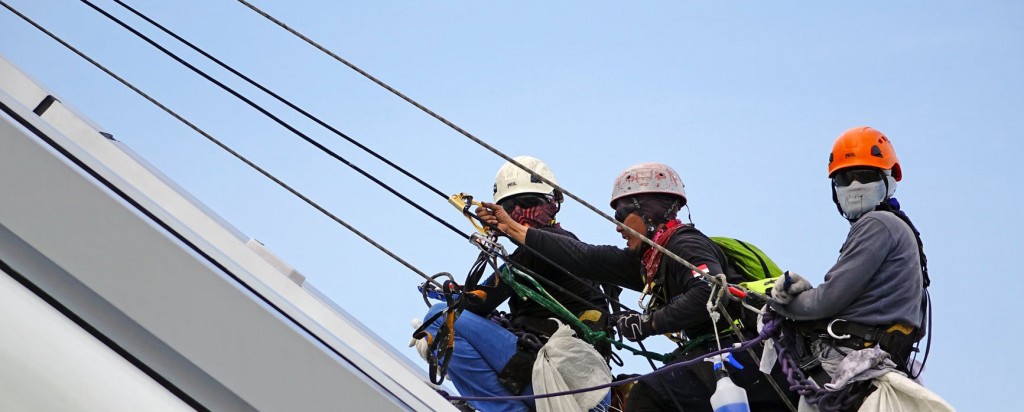 Fall Arrest Training vs. Working At Heights Training
Fall Arrest Training vs. Working At Heights Training
Understanding the difference between fall arrest training and Working At Heights training is important, especially if you work in the construction sector. Receiving proper, hands-on training for your job is the best way to prevent accidents, injuries, and deaths.
According to Canada’s Occupational Health & Safety Magazine, over 40,000 Canadians are injured each year due to fall accidents. This is why proper training is so important. Some WAH courses are also labelled as fall arrest training. This can be confusing. The two most important questions to ask are:
1. Does my workplace specifically require CPO approved Working At Heights training?
2. Is the course I am about to take fall arrest training or WAH? Is it labelled as fall arrest training but is a CPO approved WAH course? Is it called Working At Heights but is not CPO approved?
Ontario workplaces are divided into legislated sectors. Each sector is governed by sector-specific regulations that outline training requirements. Ontario Regulation 213/91 – Construction Projects governs construction work, including work completed at heights. Working At Heights training is mandatory for any construction project workers who use any of the following methods of fall equipment:
• A travel restraint system ✓
• A fall restricting system ✓
• A fall arrest system ✓
• A safety net ✓
• A work belt ✓
• A safety belt ✓
It is the employer’s responsibility to ensure that workers who may use fall protection systems receive proper Working At Heights training. Before a worker can undertake work at heights, they must complete an approved training program delivered by an approved training provider.
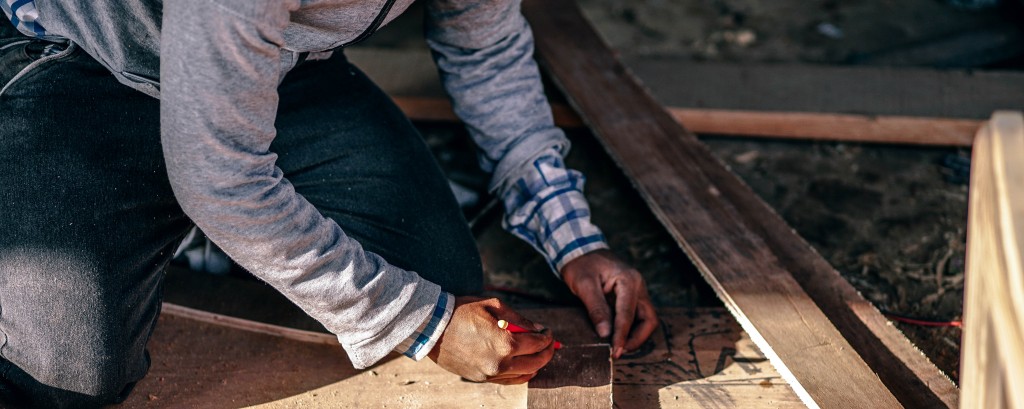
Working At Heights Training Is Not Required For My Job – Should I Still Take It?
As mentioned above, workers on construction projects who use the above methods of fall protection must receive Working At Heights training. However, other workers may benefit from Working At Heights training too. Any person who is exposed to fall hazards during their work could find WAH training beneficial.
Those working in industrial, mining, or healthcare sectors will find WAH course content helpful for their field. Keep in mind that although anyone can take the WAH course, Working At Heights training is geared towards those working on construction projects. For a shorter and more general course, check out ACUTE’s Fall Prevention training.
The Ontario Ministry of Labour, Immigration, Training and Skills Development (MLITSD) requires those working on construction projects to complete Working At Heights training. There is currently a two-year transition period for workers who met the fall protection training requirements set out in subsection 26.2(1) of the Construction Projects Regulation prior to April 1, 2015. Workers who met these requirements had until April 1, 2017 to complete an approved WAH training course – make sure you know the Ontario laws concerning Working At Heights! Contact ACUTE today for more information about Working At Heights and safety training.

Worker Rights
Employees who will be working at heights have the right to receive proper, CPO-approved Working At Heights training that will prepare them and keep them safe while working at heights.
The Occupational Health and Safety Act (OHSA) allows all* workers the right to refuse work they fee is unsafe to themselves or others. Workers cannot be disciplined for refusing work they feel is unsafe. There are many conditions in which a worker may feel unsafe. For example, inadequate training may not properly prepare an employee for their work. Equipment may be faulty, or the workplace itself may be hazardous. To learn more about worker’s rights to refuse work, read this MLITSD page.
*Some workers in specified circumstances cannot refuse work, such as police officers, firefighters, workers employed at correctional institutions, and various healthcare professionals.
Employer Responsibilities
It is the employer’s responsibility to ensure that their employees receive proper CPO-approved Working At Heights training. Employers must ensure that:
• WAH training is completed by April 1, 2017 under new standards
• WAH training is completed before workers begin work at heights on construction sites
• WAH refresher training is completed three years after first WAH training course
Employers must also provide adequate supervision and instruction to their employees. The Working At Heights course is a qualification in addition to the required WAH training set out by the Construction Projects Regulation (O. Reg. 213/91).

Working At Heights Training Ontario – Levels Usually Offered
Most trainers will provide the following Working At Heights training courses. Most courses follow a similar format, though no two courses are exactly alike.

Working At Heights Training Course (Required by The Ministry of Labour, Immigration, Training and Skills Development)
Employers are required by the MLITSD to provide their workers with this Working At Heights training course. This is the first step to Working At Heights training. These courses typically cover fall hazards and prevention, the inspection and use of safety equipment and harnesses, and legislation information. This course ends with a written test.
Working At Heights Refresher Course
Workers are required to complete a Working At Heights refresher training course every three years. This course is only for those who have already completed the Working At Heights training and have industry experience.
These courses are typically shorter in duration and usually review most of what was learned during the Working At Heights course – including legislation, fall prevention, equipment inspection, and more.
Fall Prevention Training Course
Please note: Fall prevention training is not an alternative to the MLITSD-required Working At Heights Course.
Fall prevention training can be additional training for any employees who work at heights. These courses often focus on how to prevent falls when using equipment and working from heights, outline common hazards associated with working at heights and how to prevent them, and how to inspect safety equipment such as harnesses.

As of April 1, 2017, all workers must be trained on the new Working At Heights standard. Currently, a two-year transition period has been implemented for workers who completed the fall protection training requirements set out in subsection 26.2(1) of Ontario Regulation 213/91 – Construction Projects prior to April 1, 2015.

After three years, the Ontario Ministry of Labour, Immigration, Training and Skills Development (MLITSD) requires workers to complete a CPO-approved half-day Working At Heights refresher training course under the O. Reg. 297/13: Occupational Health and Safety Awareness and Training. The refresher course length varies in time depending on the specific needs of the individual or group.
According to the MLITSD, under O. Reg. 296/13, employers are also required to make all training records available to an inspector upon request. If an inspector discovers an expired or non-existent Working At Heights ticket, they can take immediate action against the employer.
An inspector may issue a compliance order that must be fulfilled within a certain time period. If there is imminent hazard or danger, the inspector can issue an immediate stop work order.
If an employer fails to comply with given orders, they can be prosecuted under the Provincial Offences Act.
In November 2016, CBC News reported that roofer Joseph Isnor was jailed after failing to keep employees working at heights safe.
“[Isnor] was undeterred by lesser punishments he received for repeated safety violations prior to his sentence in May. Fines were not paid on time and safety presentations Isnor was ordered to complete were left undone.” – Cassie Williams, CBC News
Working At Heights safety is taken more seriously now than ever before. The recent case of Joseph Isnor shows that non-compliance and failure to keep employees working at heights safe will not be taken lightly. There is also a heightened focus on safety in the construction sector.
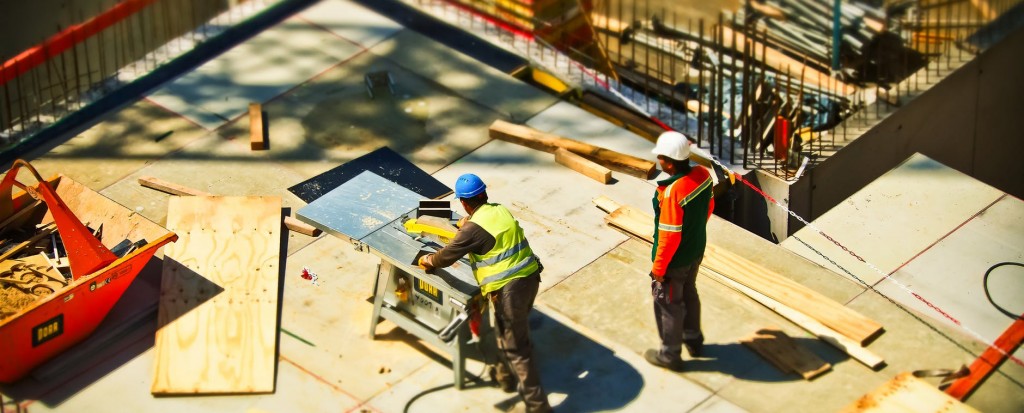
From 2017-2018, there will be many “inspection blitzes” to help ensure workers are safe on the job. During an inspection blitz, the inspector will focus on certain things such as compliance with OHSA and its regulations, workplace-specific hazards such as fall hazards, record of injuries, and more (source). Remember, inspectors do not need to give warning before they visit a work site. It is important to always be prepared and ensure workers are always practicing safe methods in the workplace.

MLITSD Requirements For Training Providers
Employers are not the only ones with requirements. Training providers must adhere to strict regulations regarding the Ontario Working At Heights law before gaining approved provider status. The MLITSD requires training providers to:
• Comply with all relevant provincial workplace legislation and have all necessary commercial liability or errors and omissions insurance
• Include specific course material as outlined by the MLITSD
• Ensure a thorough and specific learning experience for trainees as outlined by the MLITSD
• Ensure alternative training (e.g. online learning) adheres to the requirements of the Working at Heights Training Program Standard
• All training materials must meet the requirements outlined by the MLITSD and of the Working At Heights Training Program Standard
• Provide a safe, healthy, and accessible learning environment for all
• Provide trainee and employer with a document stating proof of course completion after successfully taking the course
• Provide proof of trainee course completion to the CPO
• Support the transfer of learning
Source: Ontario Ministry of Labour, Immigration, Training and Skills Development

“ACUTE’s trainers have a passion for the material and care about their clients.” – Rob, Tank Manufacturing Company – Read more testimonials here!
ACUTE’s Working At Heights training program has been approved by the Chief Prevention Officer under the Ministry of Labour, Immigration, Training and Skills Development’s Working At Heights Training Program Standard and the Working At Heights Training Provider Standard
ACUTE helps clients achieve compliance with the following OH&S requirements for Working At Heights:
• 297/13.7.1: Worker completes MLITSD compliant training program ✓
• 297/13.6.8: Training is only valid for 3 years and must be retaken thereafter ✓
• 297/13.10.1: Maintain record of completion ✓
It is important for training providers to meet regulatory requirements. This provides significant accountability for employers and ensures training material is relevant and up to date. Still, the most important part of training is to ensure workers are effectively protected and equipped when it comes to navigating workplace hazards. ACUTE not only meets government requirements but strives to provide quality, hands-on, and industry-tailored training to each of their clients.


When Working At Heights you should never:
1. Overload ladders. Always consider the equipment or materials workers are carrying before working at heights. Check the pictogram or label on the ladder for information.
2. Overreach on ladders or stepladders.
3. Rest a ladder against weak upper surfaces. (ie: glazing or plastic gutters)
4. Use ladders or stepladders for strenuous or heavy tasks. Only use them for light work of short duration. (a maximum of 30 minutes at a time)
5. Let anyone who is not competent work at heights. This means anyone who does not have the training, skills, knowledge, and experience to do the job.
6. Proceed without a Personal Fall Arrest System (PFAS).
7. Work without proper Personal Protective Equipment (PPE).
8. Start a job without an incident plan.


1. Use rails – When you can, use rails. There are rail requirements that need to be met by OHSA, however, rails can be built by job site carpenters or pre-built by manufacturers.
2. Select the proper PFAS – If you’re going to use Personal Fall Arrest Systems (PFAS), you need to ensure you choose the right equipment. All full-body harnesses that meet standards will perform the same, despite their cost. Do your research and decide what it is you need.
3. Inspect your PPE – Employees can use all the equipment they want, however, if they’re not inspecting it, it could fail at any time. Harnesses and lanyards, while they need to be periodically inspected by a Competent Person (one with the knowledge to recognize the hazard AND the authority to correct it), they should also be inspected by the user prior to every use.
4. Ensure you understand fall distance – You can wear all the fall protection equipment in the world, but if it allows you to hit the lower level before it engages, it’s pointless. You need to understand the fall distance, your height, and use your equipment accordingly.
5. Ensure the selection of an acceptable anchor point – PVC pipe? Not an anchor. Decorative steel? Not an anchor. In fact, many more things will NOT be an acceptable anchor point than WILL be an acceptable anchor point. Why? Because the anchor point must support not just the weight of the person attached, but 5000 lbs. per person attached (or a factor of 2 if you’re having an engineer determine your anchor).
6. Ensure you select the best means of Working At Heights (scaffold vs lift vs ladder) – Just as harnesses are not one-size-fits-all, neither are fall protection solutions. In some situations, a scaffold is going to be your best solution to work at heights. Other times, you’ll need to use a ladder, at which point the requirements for fall protection become trickier. Evaluate your situation carefully and determine what the right piece of equipment is for that task in that location.
7. Use ladders properly – Don’t assume that just because you have a ladder at home, you know what you’re doing. First, make sure that ladders are the best way to do what you’re doing, then make sure your employees know how to properly use them. 3’ extension, 4:1 ratio, 3 points of contact, and secured. If you don’t know what that refers to, you may not know how to use an extension ladder properly. Provide proper training to your employees so that they use the tools they are being given the right way.
8. Know your roofing regulations – Roofing regulations are some of the most misunderstood requirements. If you are a roofer make sure you are familiar with the regulations and requirements or speak to somebody who is.
9. Ensure proper use of lifts – One thing that gets missed quite often is that any person in a boom lift, at any time, at any height, must be properly tied-off. With scissor lifts, things are a little different. While the site you are working on or the owner of the facility/project may require you to tie-off in a scissor lift, there is no regulatory requirement to do so. However, the moment you forget to close your gate or secure your chain, you are no longer protected by the rails and are now in a fall protection violation.
10. Train, train, train – It’s been mentioned in various paragraphs above, but it can’t be stressed enough. If you want your employees to work safely at heights, they must be properly trained. Period. Not only is training required by law, there is just too much room for error and confusion when a person without the proper knowledge tries to protect themselves at heights.

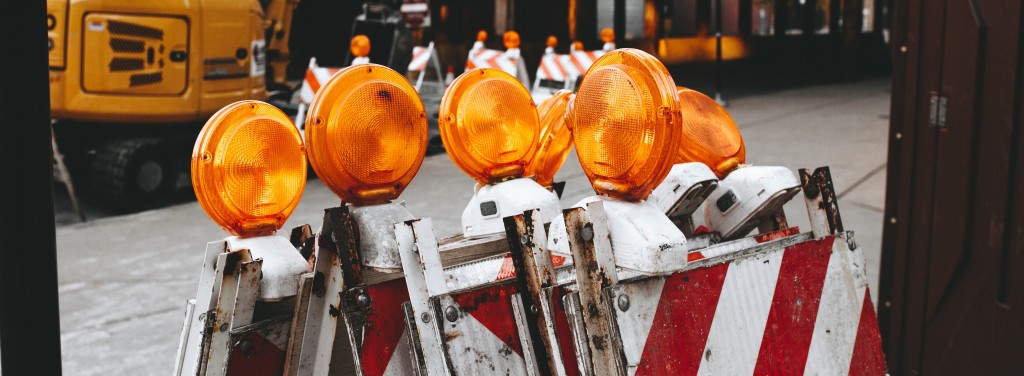
Fall Protection Training in Ontario – Learn how ACUTE offers the best fall protection training and where to go for more information.
Time to complete: 10 minutes
Working at Heights Online Quiz – Test your knowledge about working at heights with ACUTE’s online quiz!
Time to complete: 15 minutes

Fall Arrest Training vs Working At Heights: What’s The Difference?
Understanding the difference between fall arrest training and Working At Heights training is important, especially if you work in the construction sector. Receiving proper, hands-on training for your job is the best way to prevent accidents, injuries, and deaths.
According to Canada’s Occupational Health & Safety Magazine, over 40,000 Canadians are injured each year due to fall accidents. This is why proper training is so important. Some WAH courses are also labelled as fall arrest training. This can be confusing. The two most important questions to ask are:
1. Does my workplace specifically require CPO approved Working At Heights training?
2. Is the course I am about to take fall arrest training or WAH? Is it labelled as fall arrest training but is a CPO approved WAH course? Is it called Working At Heights but is not CPO approved?
Working At Heights

Unlike other working from heights courses, Working At Heights must be taken by workers who use fall protection equipment on Construction Projects. This is a requirement from the Ontario Ministry of Labour, Immigration, Training and Skills Development (MLITSD).
This training requirement is part of the O. Reg. 297/13: Occupational Health and Safety Awareness and Training requirements, along with many other requirements for those working on Construction Projects. Failing to provide workers with CPO (Chief Prevention Officer) approved WAH training from a CPO approved trainer can result in fines and other legal action.
A CPO approved Working At Heights training course is not required for anyone else working at heights. It is only a requirement for those working on Construction Projects. However, some employers or workers may choose to enroll in a WAH course if they feel it is beneficial to their work and safety.
ACUTE’s CPO approved Working At Heights training includes different modules that cover both theory and hands-on learning. Some components of Working At Heights include:
• WAH legislation
• WAH hazards
• Fall prevention strategies and systems
• Fall prevention/protection system requirements and limitations
• Harness inspection and fitting exercise & evaluation
• Ladders, scaffolds, and elevating work platforms
Fall Arrest Training

Fall arrest training, sometimes paired with or called fall prevention training, is another form of working from heights training.
Fall arrest training, however, is NOT a replacement for Cheif Prevention Officer approved Working At Heights training. Workers who must receive WAH training due to MLITSD requirements cannot take fall arrest training instead.
Fall arrest training is more general than Working At Heights training, as WAH training is tailored to the construction industry. Fall arrest training can be modified to meet the specific needs of different industries.
ACUTE’s Fall Prevention course is geared towards those working in Industrial Establishments, Mining Operations, Health Care and Residential Facilities sectors and other workplaces that are not Construction Projects.
Some components of Fall Prevention training include:
• Fall prevention strategies and systems
• When is MLITSD Working At Heights training required
• Fall protection systems
• Rescue plan – components and purpose
• Controlling fall hazards

Q: Who needs Working At Heights training?
A: As of 2015, the Ontario Ministry of Labour, Immigration, Training and Skills Development requires training for workers who work on construction projects and use any of the following methods of protection:
• travel restraint systems
• fall restricting systems
• fall arrest systems
• safety nets
• work belts or safety belts
Workers who use any of the above on construction projects MUST receive CPO-approved Working At Heights training before undertaking work at heights (Ontario construction sector plans 2017-2018).
Q: What qualifies as a “fall hazard?”
A: There are many different potential fall hazards when working at heights. A fall hazard is any hazard that may cause someone to fall. Some examples of fall hazards include: missing protective equipment (e.g. guardrails), misuse of protective equipment, lack of personal protective equipment, poor housekeeping (e.g. failure to clean up a spill), and improper worker training. Click here to learn more.
Q: When do I have to complete my Working At Heights training by?
A: The original date for completing the new Working At Heights training was April 1st, 2017. However, an extension has been given. Now workers must have completed a CPO-approved WAH training course by October 1st, 2017. For more information about these requirements, visit the Ontario Ministry of Labour, Immigration, Training and Skills Development Notices page.
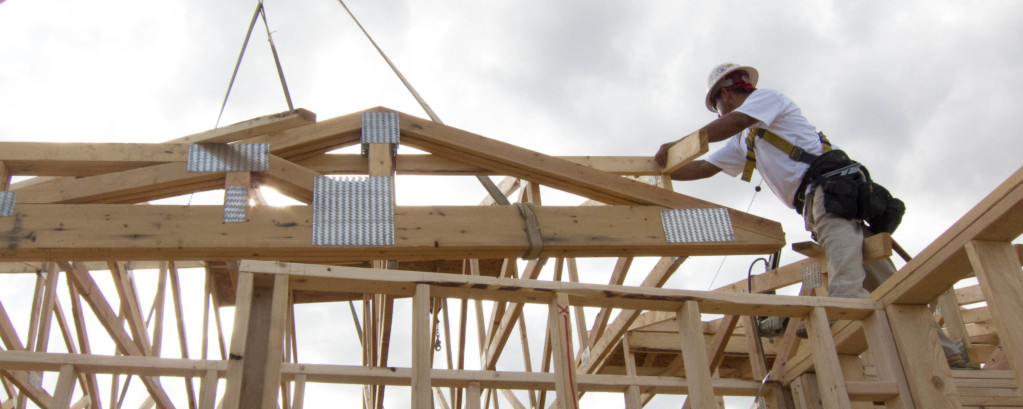
Q: For Construction Projects, what are the recent Occupational Health and Safety Awareness and Training Regulation (OHSA) amendments I should know about?
A: Construction Projects – O. Reg. 242/16, amending O. Reg. 213/91: Amendments have been made strengthening and clarifying the requirements for using suspended access equipment. The amendments came into force on January 1, 2017. Some of these amendments include:
• Requirements for roof plans and other specific work plans
• New training requirements for workers who may use or inspect suspended access equipment
• Enhancement of existing inspection, testing, and maintenance requirements
• For the full list and more information, visit the Ontario General Contractors Association and the MLITSD Notices page.
Q: Who is responsible for ensuring workers complete proper Working At Heights training?
A: It is the employer’s responsibility to ensure that workers complete a CPO-approved Working At Heights training program delivered by a CPO-approved trainer before workers begin work at heights. For more information on Working At Heights responsibilities, visit the MLITSD Working At Heights Training page.
Q: How long is Working At Heights training valid for?
A: Working At Heights training is valid for three years after the completion date. After three years, workers are required to complete a Working At Heights refresher training course.
Q: Is a code of practice necessary when working from an elevating work platform at a height of 7.5 meters or more?
A: Yes. The legislation does require a code of practice when working from an elevating work platform at a height of 7.5 meters or more.
Source: http://travailsecuritairenb.ca/docs/QuestionsandAnswers.pdf
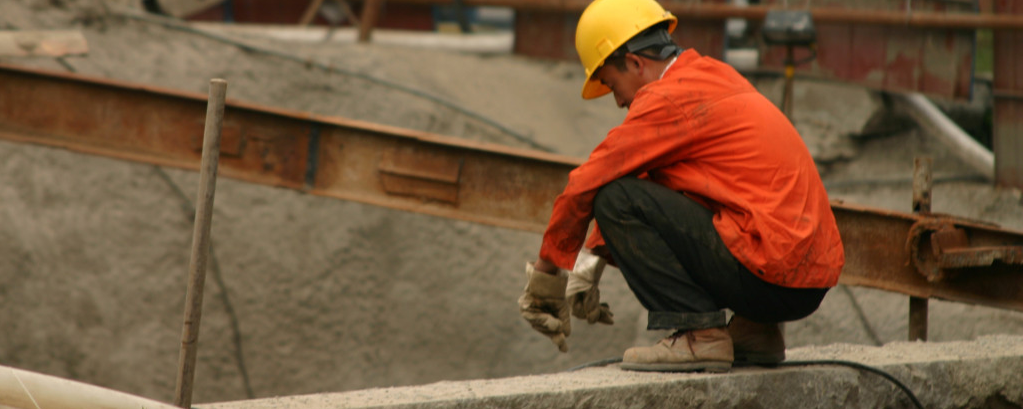
Q: If I want to install permanent guardrails on my roof, what are the legislative requirements?
A: It depends on whether the structure to which the guardrails will be installed will have little public access or general public access. If the structure has little to no public access, then you should follow the guidelines given in section 97 of General Regulation 91-191. If the structure is accessible to the general public, then you must follow the provisions of the Canadian Building Code.
Source: http://travailsecuritairenb.ca/docs/QuestionsandAnswers.pdf
Q: How do workers know if structural building components (for example, the steel beams of HVAC systems) are adequate to be used as anchors in a fall protection system?
A: Since these structural building components were not originally intended to be used as anchors in a fall protection system, there are no supplier instructions on how to determine the adequacy of these systems if used as anchors. Therefore, in order to determine if these components can be used as safe and adequate anchors, workers must rely on the expertise of an engineer or other competent person to determine adequacy. Legislation requires that anchors must be able to withstand 22kN of force, and when used by a competent person, be able to withstand four times the maximum load. Source: http://travailsecuritairenb.ca/docs/QuestionsandAnswers.pdf.
Working At Heights – What to Expect?

If you are about to take your first Working At Heights training course, one of the biggest questions you may have is, “What should I expect?” With ACUTE, our main objectives for Working At Heights training are to strengthen workplace safety culture, provide workers with adequate knowledge about fall hazards and general WAH safety practices, provide workers with sufficient knowledge about fall protection equipment, and reduce the number of fall accidents, injuries, and fatalities. Work with ACUTE today.
The course includes:
- Working At Heights legislation
- Working At Heights hazards
- Safe Work Plans, how to assess and control WAH hazards
- Fall prevention strategies, fall protection equipment
- Classroom interactions with experienced instructors
- Tabletop scenarios, detailed handouts, videos, quizzes, demonstration and hands-on training, and practical performance evaluations
- And much more!
Looking for WAH Safety training?
ACUTE – Helping You Work Safe!
With over 100 years of combined industry experience, you can trust that with ACUTE, you will experience only the best comprehensive, hands-on Working At Heights training. Here are some ways that ACUTE goes beyond government compliance in Ontario health and safety training.
- Open Door Instructor-Student Partnersh
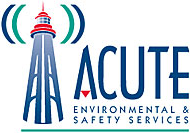 ip: ACUTE’s training services emphasize client participation. Staff foster relationships with clients and serve as a touchstone for advice moving forward.
ip: ACUTE’s training services emphasize client participation. Staff foster relationships with clients and serve as a touchstone for advice moving forward. - Serving Your Team and Industry: With a vast array of clients in the manufacturing, construction, health, academic, and government sectors, ACUTE brings the best safety practices from across the spectrum to your workplace.
- 100 Years Combined Experience: ACUTE provides comprehensive health and safety training, on-site safety services, and consulting services. With over 100 years of combined experience, our staff offers more than theoretical or abstract ideas. ACUTE offers solutions.
- Track Record of Success: ACUTE is rated 4.9/5 stars on Google reviews, demonstrating a commitment to our clients, quality, and a passion for training.
Contact us today for quality training in your workplace or on-site at ACUTE’s proven training facilities!
“Knowledgeable and professional trainers that understand the practical applications of the material they teach. They were able to give me confidence to go and use my training – exactly what I wanted.”
– Joel – Read more testimonials here
